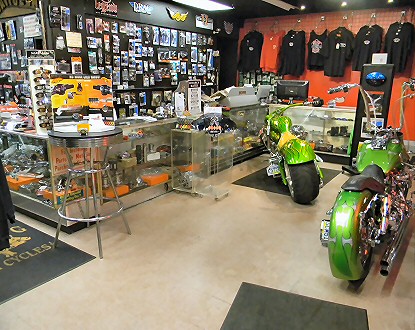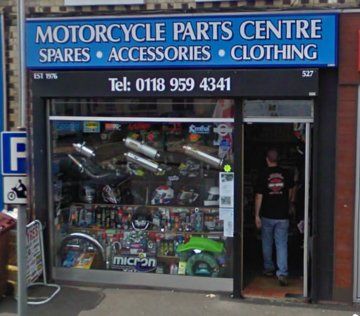Locate Affordable Rates on Motocross Parts NZ for every single Bike
Locate Affordable Rates on Motocross Parts NZ for every single Bike
Blog Article
Understanding the Essential Components of a Bike: A Comprehensive Guide for Enthusiasts
For bike lovers seeking to elevate their riding experience and ensure their bikes run efficiently, understanding the vital components of a motorbike is extremely important. Each component, from the engine's elaborate functions to the crucial function of the braking mechanisms, not just affects performance yet additionally safety and comfort. This overview will certainly go through the essential components that every rider ought to recognize with, making it possible for informed choices in both maintenance and prospective upgrades. As we begin this expedition, one must ask: just how does each component communicate to develop the seamless experience every fanatic looks for?
Engine Elements

The camshaft plays a critical function in regulating the timing of the engine's valves, ensuring the exact opening and closing necessary for reliable gas and air intake, along with exhaust expulsion. This timing is critical to maintaining ideal engine performance and effectiveness. In addition, the carburetor or fuel injection system, relying on the bike model, is liable for blending air with fuel in the appropriate proportion for burning.
The cooling system, either air or liquid-based, works to preserve the engine's temperature level within functional limitations, protecting against getting too hot and making certain durability - motorbike shop. Each part, diligently created and incorporated, contributes to the seamless operation of the engine, defining the motorbike's power outcome and general efficiency
Transmission System
Integral to the motorcycle's performance, the transmission system ensures efficient power transfer from the engine to the wheels. This system consists of several vital parts, including the clutch, gearbox, and last drive, each playing a vital duty in converting the engine's power into activity. The clutch, normally run by a hand lever, offers to disengage the engine and involve from the transmission, permitting for smooth gear modifications and regulated velocity.
The gearbox, commonly referred to as the transmission correct, consists of a set of gears that bikers can manually shift via to readjust the bike's rate and torque result. These gears are organized in a sequence that enables the bike to increase smoothly and maintain optimum engine efficiency across various rates. The majority of bikes use a sequential transmission, needing the cyclist to shift equipments in a predetermined order.
Braking Systems
While understanding the transmission system is crucial to utilizing a motorcycle's power, equally vital is the capability to control and quit that power successfully, which is where braking devices enter play. Brakes are important for safety and efficiency, offering the rider with the needed control to navigate numerous terrains and problems. Usually, motorcycles include two kinds of braking systems: disc brakes and drum brakes.
Disc brakes are extra common in contemporary bikes because of their superior efficiency. They consist of a brake disc, caliper, and pads. When turned on, the caliper squeezes the brake pads versus the spinning disc, transforming kinetic energy right into warm, thus reducing the wheel. This system provides far better warm dissipation, regular efficiency, and enhanced stopping power, specifically in wet problems.
Alternatively, drum brakes, though much less typical, are still found in some motorbikes. They work by pushing brake footwear against the inner surface of a drum connected to the wheel. While usually much less efficient in warmth dissipation and stopping power, drum that site brakes are easier and a lot more affordable.
Comprehending these stopping systems' subtleties permits cyclists to maintain their motorcycles correctly and appreciate the engineering that guarantees effective and risk-free quiting.
Suspension and Guiding
Suspension and guiding systems are important elements that dramatically affect a motorcycle's handling and adventure comfort. The shock absorber, containing forks at the front and shock absorbers at the back, absorbs road irregularities, enhancing stability and control. Front forks, normally telescopic or upside down, compress and rebound to alleviate effects, while rear shock absorbers maintain tire contact with the roadway, critical for grip and security.
Steering, centered around the handlebars, attaches the cyclist to the motorbike's directional control. The steering head bearings ensure smooth procedure, permitting precise maneuverability. Appropriate placement and maintenance of these bearings are vital for predictable steering action and decreasing cyclist fatigue.
The suspension's adjustability is another critical facet; preload, damping, and rebound setups allow modification to match different riding designs and problems. This adaptability is essential for enhancing performance, whether browsing urban roads or dealing with sturdy tracks. Innovations like digital suspension systems supply real-time modifications, boosting experience quality across varied terrains.

Electric Systems
After making certain a smooth and controlled ride with efficient suspension and steering systems, focus turns to the electrical systems, a crucial aspect of contemporary motorcycles. These systems play an important duty not only in beginning the engine yet also in powering different parts that enhance the performance and safety and security of the motorbike.
At the heart of a bike's electric system is the battery, which stores electrical power essential for starting the engine and powering complementary systems - motocross gear nz. The generator or generator, coupled with the rectifier-regulator, guarantees the battery continues to be charged while the motorcycle is in operation, transforming mechanical power right into electrical energy and maintaining voltage levels
The ignition system, one more essential component, is responsible for sparking the air-fuel blend in the engine's cyndrical tubes. Modern bikes often utilize an electronic read review ignition system, providing higher effectiveness and dependability contrasted to standard systems.
Lights systems, consisting of fronts lights, tail lights, and indications, are additionally essential, guaranteeing exposure and security for the motorcyclist. Added digital parts such as sensing units, control systems, and shows add to innovative functions like fuel injection management, anti-lock braking systems (ABS), and electronic control panels, better improving the riding experience.
Verdict
A detailed understanding of a motorcycle's crucial elements, including the engine, transmission system, stopping mechanisms, suspension, guiding, and electrical systems, is indispensable for lovers aiming to enhance efficiency, convenience, and safety. Proficiency of these components enables for informed decisions pertaining to maintenance and upgrades, inevitably enhancing the riding experience. By incorporating this knowledge, motorcyclists can guarantee their motorcycles run at peak her explanation performance and reliability, consequently making best use of both pleasure and long life of their vehicles.
For motorbike fanatics looking to elevate their riding experience and ensure their bikes run efficiently, recognizing the vital parts of a motorcycle is vital.Indispensable to the motorcycle's performance, the transmission system makes certain reliable power transfer from the engine to the wheels.While comprehending the transmission system is vital to utilizing a motorbike's power, similarly vital is the capacity to control and stop that power efficiently, which is where braking mechanisms come into play. Normally, bikes include 2 kinds of stopping systems: disc brakes and drum brakes.
A comprehensive comprehension of a motorbike's necessary parts, consisting of the engine, transmission system, stopping devices, suspension, guiding, and electric systems, is crucial for lovers intending to optimize comfort, efficiency, and safety and security.
Report this page